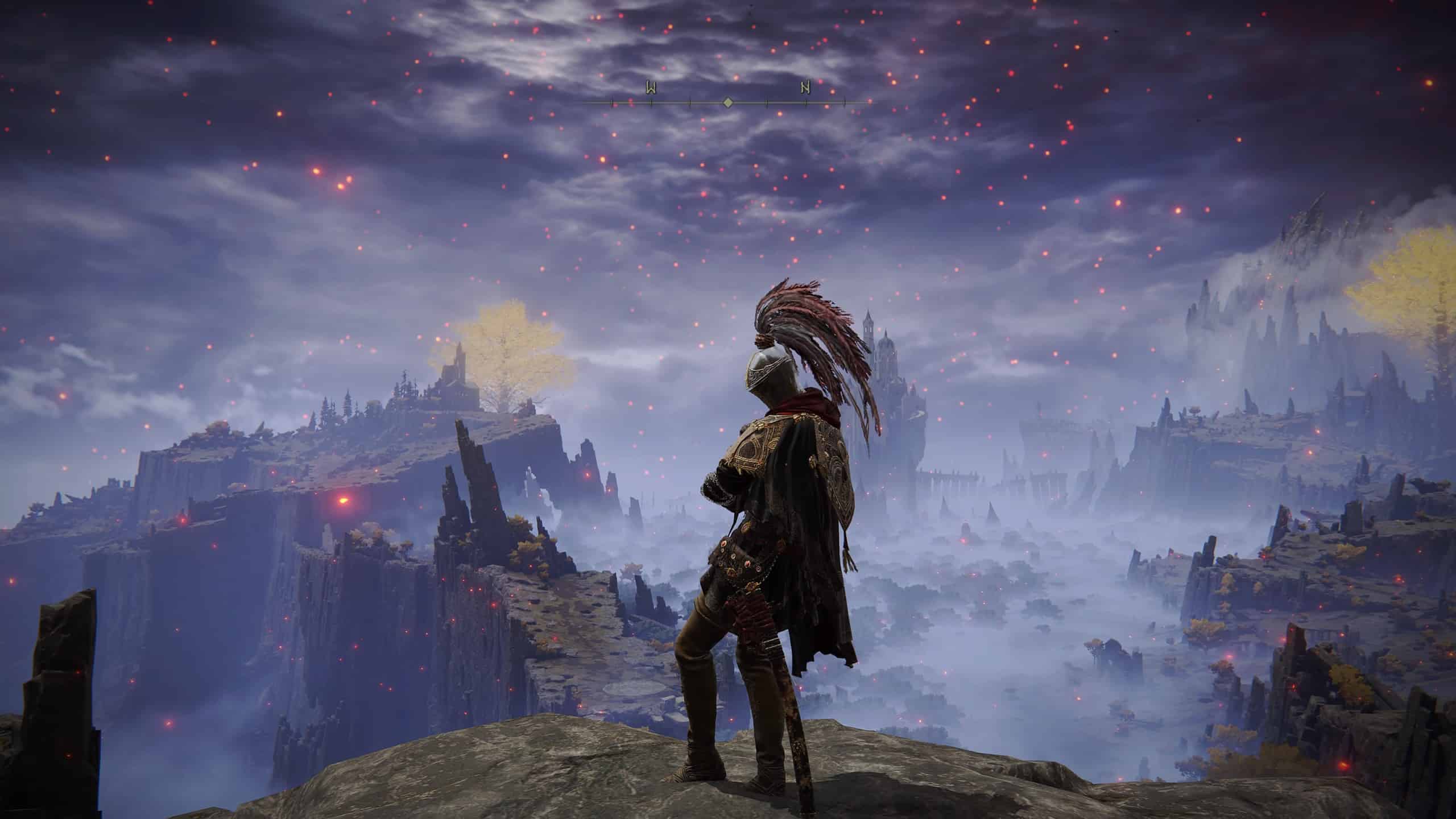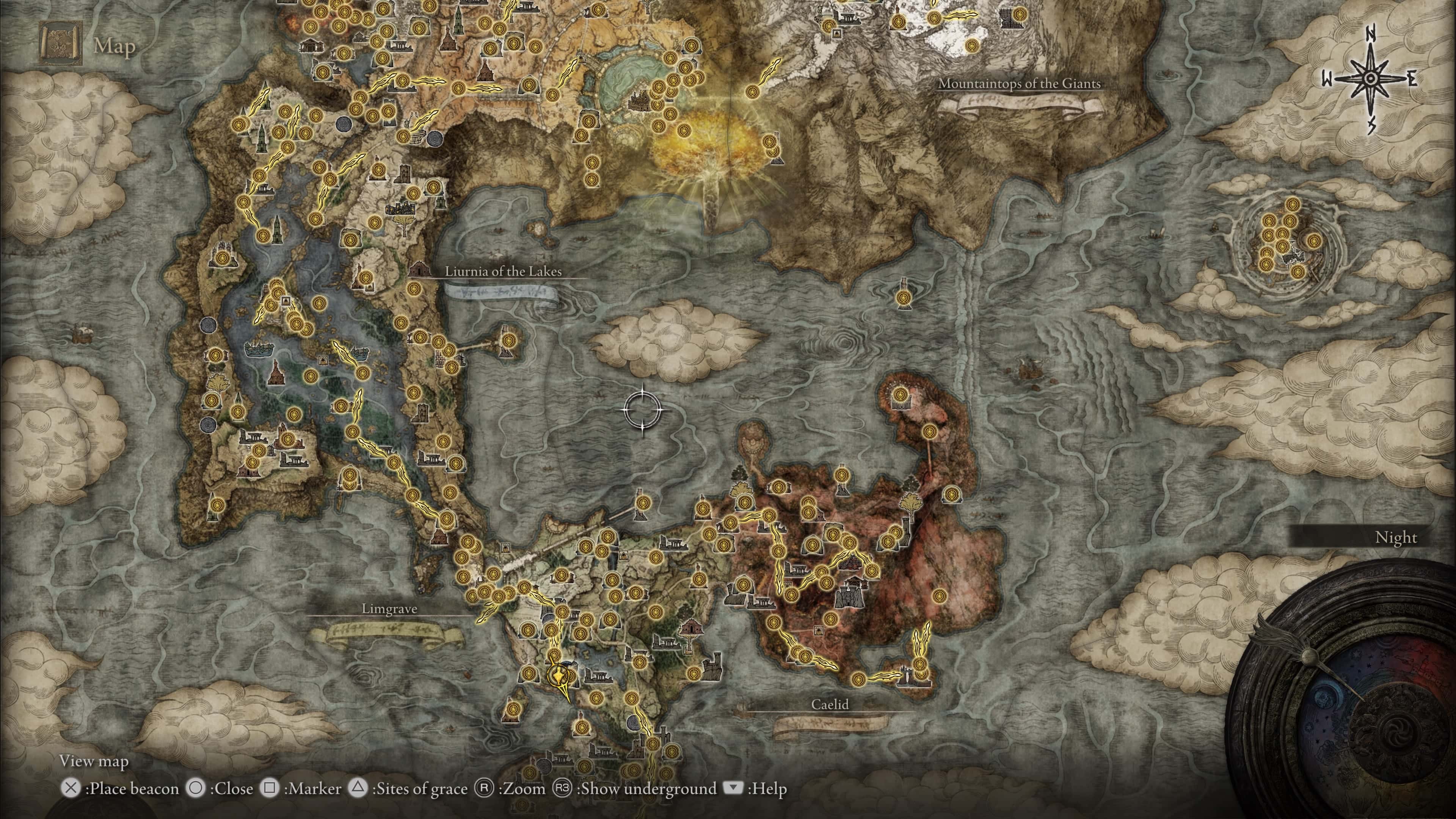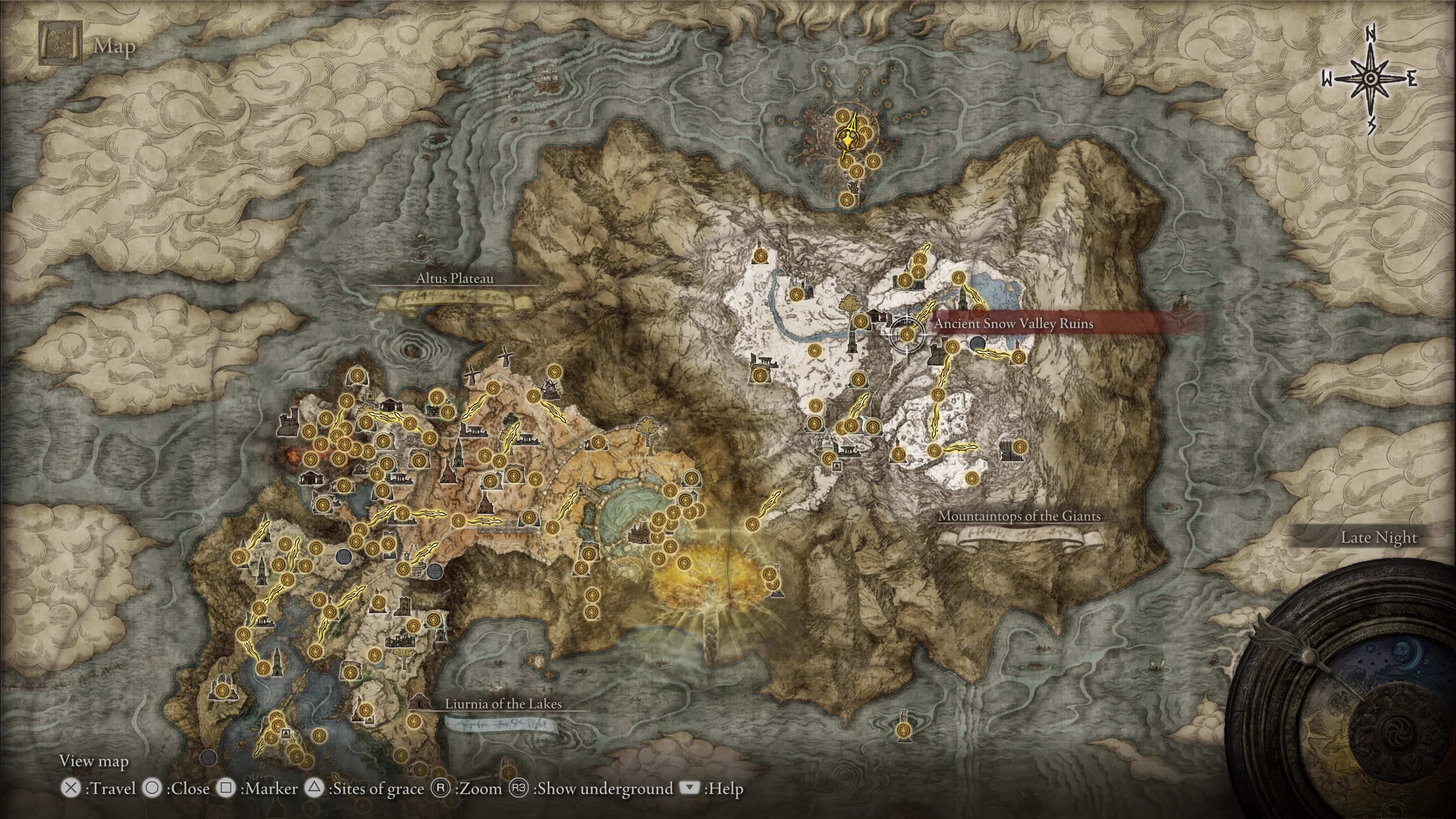Video Gamer is reader-supported. When you buy through links on our site, we may earn an affiliate commission. Prices subject to change. Learn more
FromSoftware’s epic, Elden Ring, takes the Souls series’ exploration, cryptic lore, and sense of discovery and puts it on a scale grander than anything seen in the past. Elden Ring takes place in a world known as The Lands Between’ a vast and expansive world rich with varied locations, each different from the last, a rich range of enemies, and lore that keeps expanding the more you dive into it.
The Lands Between consists of several regions such as Caelid, Limgrave, Liurnia of the Lakes, and Mt. Gelmir. If you want a refresher or just to familiarise yourself with the convoluted story of Elden Ring, the Lands Between, and the major areas of Elden Ring, we hope you find this guide useful.
Elden Ring setting
Elden Ring takes place in a world called the Lands Between. This area is a massive open world and it has nothing to do with previous games by FromSoftware.
Where does Elden Ring take place?
Elden Ring takes place in The Lands Between. The world never used to be as we see it in-game, and the events of the story explain that there was a war long ago known as the Shattering, which as the name suggests, did a number on the world. The effects of this war are most notable in Caelid, one of the main areas in Elden Ring.
Every region has its own aura, characteristics, and enemies, and is governed by a supreme lord who holds a Great Rune. These characters are faced as bosses and they are also referred to as Shardbearers. There are several areas in the Lands Between and you will visit all of them on your journey as a Tarnished.

While the game is a huge open world, Elden Ring follows a fairly natural progression route throughout each place as you beat each main boss. The major areas in the Lands Between are:
Limgrave
Limgrave is the starting area in Elden Ring. From the very first moments, Limgrave makes it clear that Elden Ring is a FromSoftware game, with an amped-up boss fight right on your doorstep. It’s one of the livelier areas of Elden Ring, featuring greenery, valleys, hills, and a castle front. Limgrave is where you start your adventure as the Tarnished and right after exiting the tutorial area, you’ll get a glimpse of the journey you are to embark on.
In the beginning area, Limgrave is unforgiving and can be extremely tough for newcomers to the genre. Full of mobs and tough mini-bosses, Limgrave is where many first-timers decide to part ways with the game. Despite all this, the first glimpse of the horizon with the giant Erdtree should be enough to compel you onward. The lord of Limgrave is Godrick the Grafted. Godrick resides in Stormveil castle, the first Legacy Dungeon you’ll tackle once you have completed Limgrave to progress through the game.
Liurnia of The Lakes
Once you progress through Limgrave, you arrive at Liurnia of the Lakes. Liurnia is arguably the most picturesque location in all of Elden Ring, retaining the lush green vibe of Limgrave and taking it up a notch by adding Mountains and large patches of greenery and water. In the middle of it all is a magic academy and the area’s Legacy Dungeon. This area’s lord is Renalla, a sorceress. Liurnia’s enemies usually have magic attacks in their arsenal, apt to the location’s main boss and lore.

Caelid
The area following Liurnia is Caelid, easily the most infamous location in Elden Ring. Caelied is grim and unsettling the moment you step foot in it, with some of the most powerful enemies in the game. Caelid has a red sky and almost every location here is a shade of red.
Much in line with the vibe of Caelid is its lord, General Radahn. Radahn is a walking corpse with a tragic past. Full of rot due to his encounter with Melania, the goddess of rot famed for feeding on the corpses of warriors, Radahn is always looking for a challenger to beat him.
Radahn is among the simplest bosses in all of Elden Ring, with his fight location being a literal warzone where you can summon multiple NPCs to fight alongside you. Radahn is giant, quick, and does enough damage to drown even the biggest of health pools within a few hits.
Altus Plateau
Altus Plateau is a mix between Caelid and Liurnia of the Lakes, with a sombre yet lush environment. Altus Plateau is a mid-game area and it connects Liurnia to Lyndell, the Royal capital. Atlus Plateau was struck hard during the shattering wars and still bears many marks of the shattering. Encampments of the war are placed throughout the region, giving us an idea of what things looked like during the war. Atlus Plateau is also connected to Mt. Gelmir, an optional area that is home to Rykard, the Lord of Blasphemy.
Leyndell, Royal Capital
Following Altus Plateau is Leyndell, the Royal Capital. Leyndell is easily the grandest location in Elden Ring, complete with an extravagant setting. Despite this, the tension here is high and enemies lurk around every corner. Not to mention the underbelly of the city is literally crawling with monstrosities and other horrors. Leyndell is very interconnected and is essential to the lore of Elden Ring. This is where you face Morgott, the Omen King and later the Elden Lord.

Mountaintop of The Giants
The Mountaintop of the Giants is where the conclusion of the Tarnished’s journey initiates. The Mountaintop is a snowfield full of ruins and relics of what once was. This location is full of corpses slain during the shattering wars and is home to the Fire Giant boss. Despite its size, the Mountaintop is relatively straightforward and you won’t miss much if you opt to go through it in a linear fashion.
What is the story and lore of Elden Ring?
As far as Elden Ring lore goes, most is explained in the game. The delivery of said lore, however, leaves a lot to be desired. The lands of Elden Ring, as we know them today, were formed as a result of a war between the children of Queen Marika following an event known as the Shattering. Queen Marika maintained the order of the Greater Will through the Elden Ring, an object that maintained the Lands Between depending on the Greater Will’s order.
A series of unfortunate events later ensued that led to the death of Marika’s beloved son, Godwyn. As a result of this, Marika allegedly shattered the Elden Ring in the hopes of resurrecting Godwyn. This made the Greater Will leave the lands Between and what followed were a series of great wars for the control of these lands.
The last of these wars were between Marika’s children over the shattered remains of the Ring to gain control over The Lands Between. This war made the Lands Between what they are today, a war-ravaged landscape consisting of multiple regions each ruled by one of Marik’s offspring.
Your character is known as a Tarnished. The Tarnished were a line of people sent to retain order in the Lands Between. It is our job to venture into these regions, defeat their lords, grab their shards to reclaim the Elden Ring, and eventually bring order into the Lands Between. All the while the Tarnished are guided by ‘Grace’, which is embodied by the Sites of Grace, naturally leading you towards your goal.
How the story ends is ultimately up to us, thanks to the multiple endings you can pursue. When we start the game, we see what is effectively a dying world and learn that perhaps the Golden Order isn’t all its cracked up to be. Whether or not you follow the will of the Golden Order to perpetuate things or you go full chaotic, is up to you.
Elden Ring setting and lore FAQs
What mythology is Elden Ring based on?
With such an emphasis on Runes, many speculate the lore of Elden Ring is based on Celtic or Irish mythologies.
Is Elden Ring connected to Dark Souls?
No. There is no official link to these games made by FromSoftware.
Who is god in Elden Ring?
The only god-like being we know of in Elden Ring’s lore is the Greater Will.

